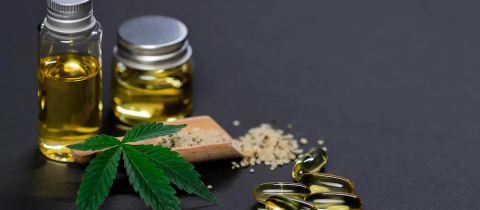What’s the worst movie ever made? Let me put in a plug for the 1936 flick “Reefer Madness.” Disguised as a movie with a plot, this was actually a propaganda film to highlight the evils of marijuana smoking. “Women Cry for It, Men Die for It” screamed the promotional posters. Moviegoers would witness “drug-crazed abandon and the soul-destroying effects of killer marijuana.” The movie delivers some of the worst acting you’ll ever see, along with exaggerated allegations about the effects of smoking marijuana. The thin plot focuses on a pair of upstanding teenagers who fall into the clutches of a dastardly gang bent on converting them into marijuana addicts. It only takes one joint to get the kids hooked, and after that, it’s a straight descent into hell. Along the way, there’s illicit sex, hallucinations, murder, suicide and ghastly dialogue. If marijuana makes people talk like that, it is a dangerous substance indeed.
The 1930’s featured some of the strongest anti-drug rhetoric in history. Government pamphlets warned teenagers about friendly strangers who might put the killer-drug marijuana in their coffee and described how insanity and death lurk in this “narcotic.” You could “grow enough marijuana in a window box to drive the whole population of the United States, stark, staring, raving mad,” declared an article in the widely circulated Hearst newspapers. The writer went on to ask the rhetorical question, “heroin, cocaine, morphine, marijuana, opium-what does it matter which it is? One horror is no worse than another.” It didn’t seem to matter that there was absolutely no evidence to back up these preposterous claims. Marijuana was a perfect scapegoat to explain increasing crime rates. The Federal Bureau of Narcotics claimed that marijuana caused ghetto crimes of violence, insanity and led to heroin addiction.
The anti-marijuana movement had strong racial overtones. Mexican and black workers in the southern US often took solace in marijuana smoking and suffered severely at the hands of the white narcotics police. Even the medical establishment supported the racism. A 1931 issue of the New Orleans Medical and Surgical Journal stated that “The dominant race (meaning whites) and most enlightened countries are alcoholic, whilst the races and nations addicted to hemp and opium, some of which once attained great heights of culture and civilization, has deteriorated both mentally and physically.” Such absurd statements totally ignored the scientific evidence that was already available at the time.
Thirty years earlier, the British government had established the Indian Hemp Drugs Commission to answer questions about the use of marijuana in India, then of course under British rule. The expert committee interviewed almost two thousand witnesses, made field trips to thirty cities and published a thorough seven-volume report. It concluded that small doses of hemp were beneficial and that moderate use of cannabis had no significant injurious mental, physical or moral effect. Furthermore, even abuse of cannabis was less harmful than the abuse of alcohol. The Commission recommended a system of licensing and revenue taxation for the sale of cannabis and suggested that overly restrictive marijuana laws would drive people to more dangerous drugs like alcohol and opium.
The Indian Hemp Commission report was a level-headed and thoroughly researched account about marijuana use. It was totally ignored in the US because it did not fit the political ideology of the times. It was far more suitable for the Federal Bureau of Narcotics to paint a picture of marijuana as a ghastly and dangerous substance so that it could push for the establishment of “narcotics farms for the confinement and treatment of persons addicted to Indian Hemp.”
The vestiges of that era are still with us. Some right-wing fringe groups attribute the moral decay of our society to marijuana use. Smoking pot damages the brain they say. It leads to harder drugs. Pro-marijuana groups have fought back, starting with the beatniks of the fifties and the hippies of the sixties. Smoking pot is not only pleasurable and innocuous, but they also claim, it has certain decided health benefits.
What do the scientific facts say? Marijuana does not destroy the brain but heavy, daily use may lead to slight memory impairment. A well-controlled study carried out at Harvard University examined 65 heavy users and found that when compared to light users, they had a slightly harder time with some card sorting experiments. Marijuana does impair dexterity and visual skills and therefore affects driving, but does not make people drive recklessly, as alcohol does. Neither is there evidence that it leads to the use of harder drugs. In fact, in Holland, where it has been legal to purchase marijuana in coffee shops since 1976, there is an amazingly low rate of heroin addiction. While more Dutch teenagers try marijuana, less go on to be regular users than in the US.
Obviously, marijuana smoking is not good for the lungs. These organs were designed to breathe clean air. Studies have shown that three to four joints is roughly equivalent to twenty cigarettes in tar content, mostly because of the lack of filters and the tendency of pot smokers to hold the smoke in their lungs for a longer time. Unlike tobacco cigarettes, however, marijuana does not lead to blocked airways or emphysema. Chronic bronchitis, though, is a possibility. Marijuana has been found to have estrogenic effects and according to some may be playing a role in the reduction of sperm counts. There is evidence that constant marijuana use leads to a generalized lack of motivation to pursue studies or a career. In some cases, smoking pot can cause anxiety and panic. All good reasons to be extremely wary of marijuana use. Now that cannabis is legal in Canada we will soon have greater insight into its ups and downs.
Want to comment on this article? View it on our Facebook page!







